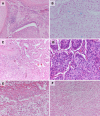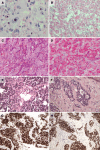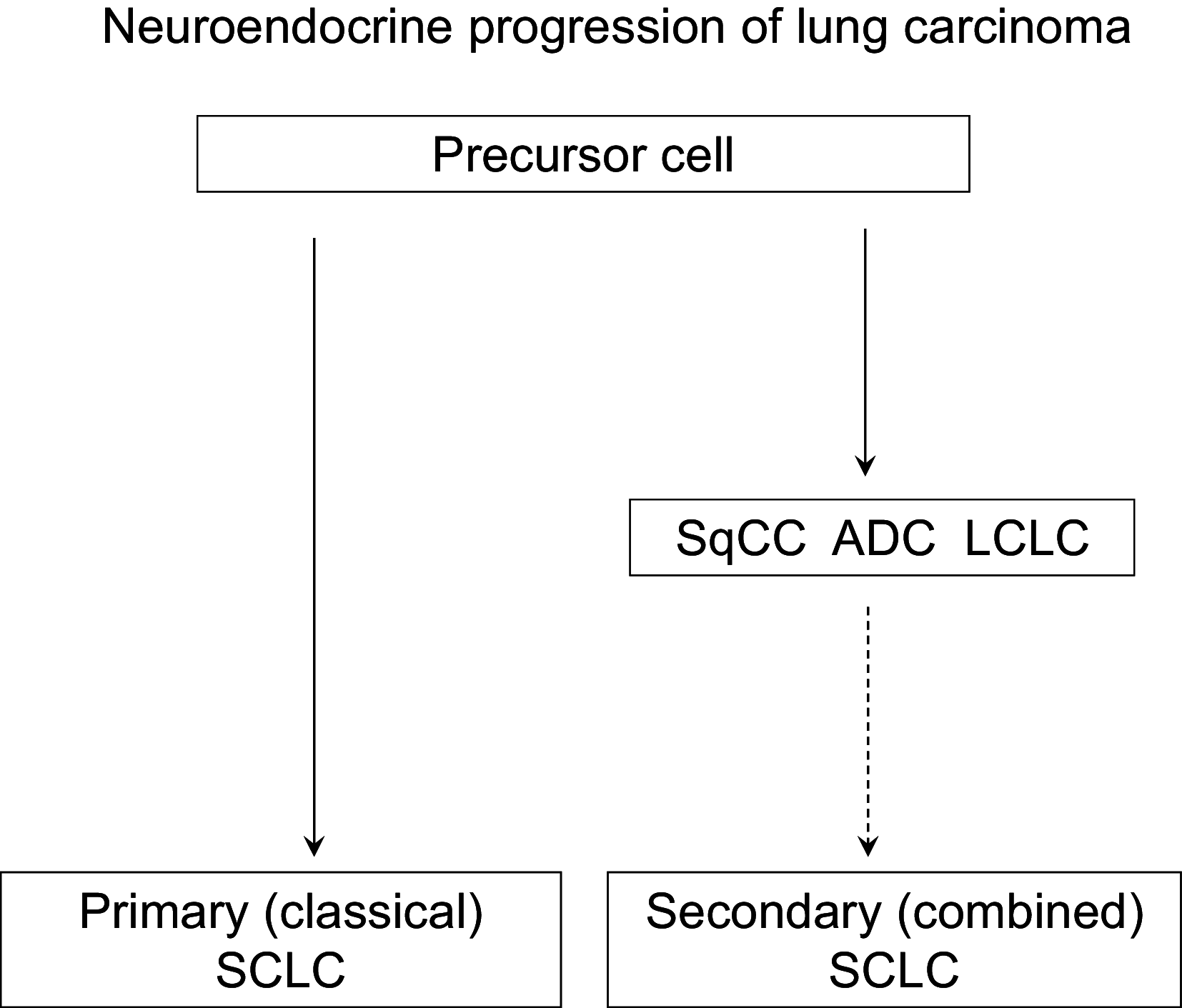Lung cancer: developments, concepts, and specific aspects of the new WHO classification
- PMID: 26197868
- PMCID: PMC11819351
- DOI: 10.1007/s00432-015-2004-4
Lung cancer: developments, concepts, and specific aspects of the new WHO classification
Abstract
Introduction: Diagnostic methods and algorithms for the diagnosis of pulmonary neoplasms have considerably changed over the recent years. Based on large-scale molecular characterization studies and the development of targeted therapies, precise morphological, immunohistochemical, and molecular pathological tumor subtyping is now of utmost importance for evidence-based treatment decisions. Changes of diagnostic concepts initially referred to biopsies and cytology specimens but are now also transferred to resection specimens.
Methods: This review is focused on recent developments in morphological and immunohistochemical subtyping of pulmonary neoplasms and concepts of tumor progression. It also provides perspectives on relevant changes of diagnostic concepts within the context of the new WHO classification.
Conclusion: It becomes apparent that a three-step diagnostic concept based on morphology, immunohistochemistry, and molecular pathology is important to meet the requirements of an increasingly more complex, interdisciplinary care of lung cancer patients and to allow for reliable, clinically meaningful tumor diagnoses.
Keywords: Classification; Diagnosis; Immunohistochemistry; Lung cancer; Molecular pathology.
Conflict of interest statement
None.
Figures




Similar articles
-
International association for the study of lung cancer/american thoracic society/european respiratory society international multidisciplinary classification of lung adenocarcinoma.J Thorac Oncol. 2011 Feb;6(2):244-85. doi: 10.1097/JTO.0b013e318206a221. J Thorac Oncol. 2011. PMID: 21252716 Free PMC article.
-
[Lung cancer. Developments, concepts and preview of the new WHO classification].Pathologe. 2014 Nov;35(6):547-56. doi: 10.1007/s00292-014-1915-1. Pathologe. 2014. PMID: 25366371 Review. German.
-
A rapid and systematic review of the clinical effectiveness and cost-effectiveness of paclitaxel, docetaxel, gemcitabine and vinorelbine in non-small-cell lung cancer.Health Technol Assess. 2001;5(32):1-195. doi: 10.3310/hta5320. Health Technol Assess. 2001. PMID: 12065068
-
Short-Term Memory Impairment.2024 Jun 8. In: StatPearls [Internet]. Treasure Island (FL): StatPearls Publishing; 2025 Jan–. 2024 Jun 8. In: StatPearls [Internet]. Treasure Island (FL): StatPearls Publishing; 2025 Jan–. PMID: 31424720 Free Books & Documents.
-
Can a Liquid Biopsy Detect Circulating Tumor DNA With Low-passage Whole-genome Sequencing in Patients With a Sarcoma? A Pilot Evaluation.Clin Orthop Relat Res. 2025 Jan 1;483(1):39-48. doi: 10.1097/CORR.0000000000003161. Epub 2024 Jun 21. Clin Orthop Relat Res. 2025. PMID: 38905450
Cited by
-
[Pathology of lung cancer].Radiologe. 2016 Sep;56(9):777-85. doi: 10.1007/s00117-016-0154-2. Radiologe. 2016. PMID: 27495784 Review. German.
-
MTA1 promotes epithelial to mesenchymal transition and metastasis in non-small-cell lung cancer.Oncotarget. 2017 Jun 13;8(24):38825-38840. doi: 10.18632/oncotarget.16404. Oncotarget. 2017. PMID: 28418915 Free PMC article.
-
Oncogenic driver mutations, treatment, and EGFR-TKI resistance in a Caucasian population with non-small cell lung cancer: survival in clinical practice.Oncotarget. 2017 Sep 13;8(44):77897-77914. doi: 10.18632/oncotarget.20857. eCollection 2017 Sep 29. Oncotarget. 2017. PMID: 29100434 Free PMC article.
-
Down-Regulation of TMPO-AS1 Induces Apoptosis in Lung Carcinoma Cells by Regulating miR-143-3p/CDK1 Axis.Technol Cancer Res Treat. 2021 Jan-Dec;20:1533033820948880. doi: 10.1177/1533033820948880. Technol Cancer Res Treat. 2021. PMID: 33685293 Free PMC article.
-
ZNF280A promotes lung adenocarcinoma development by regulating the expression of EIF3C.Cell Death Dis. 2021 Jan 4;12(1):39. doi: 10.1038/s41419-020-03309-9. Cell Death Dis. 2021. PMID: 33414445 Free PMC article.
References
-
- Addis BJ, Dewar A, Thurlow NP (1988) Giant cell carcinoma of the lung—immunohistochemical and ultrastructural evidence of dedifferentiation. J Pathol 155:231–240 - PubMed
-
- Brambilla E, Moro D, Veale D et al (1992) Basal cell (basaloid) carcinoma of the lung: a new morphologic and phenotypic entity with separate prognostic significance. Hum Pathol 23:993–1003 - PubMed
-
- Bubendorf L (2011) Preneoplastic lesions of pulmonary carcinoma. Der Pathologe 32(Suppl 2):218–223 - PubMed
-
- Cavazza A, Colby TV, Tsokos M et al (1996) Lung tumors with a rhabdoid phenotype. Am J Clin Pathol 105:182–188 - PubMed
Publication types
MeSH terms
LinkOut - more resources
Full Text Sources
Medical

